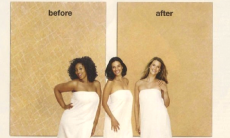Are you paying attention to your mobile marketing yet? After years of being the next big thing, mobile might finally be the current big thing. But there is a big problem–most people don’t know how to prove it. A joint study by the ANA (Association of National Advertisers) and MediaVest shows marketers are excited about opportunities for mobile marketing but frustrated about the ability to prove return on investment (ROI). Are you one of them?

Consider these highlights:
- 96% of marketers currently use or are planning to incorporate mobile marketing into their marketing mix
- 85% report an intent to raise their mobile budgets in the near future
- 84% use mobile websites; 78% mobile search; 76% mobile apps and 75% mobile display ads
- 42% are concerned about having proper mobile metrics in place
- 42% report an ability to prove ROI
- Only 21% state they have been successful in mobile – a decrease from 2010
To help alleviate the frustration, here are case studies. They cover opportunities from mobile optimized websites, mobile apps, mobile search, mobile ads, MMS, SMS, QR Codes to social media. They also prove ROI is more often achieved when marketers pursue mobile with a specific business purpose rather than mobile for mobile’s sake.
Here are 16 case studies that prove ROI of mobile marketing
- BMW: Began using MMS (Multimedia Message Service) to send images, video, sound files and text messages for customized snow tire offers. They increased conversion +30%
- CARITAS HOME CARE: Boston-based home healthcare agency used mobile health devices to enhance communications and data collection with its 150 mobile clinicians. Caritas documented how the mobile devices were able to save 19,200 hours or 98 hours per clinicians per year. Although Caritas didn’t release salaries of clinicians, if we estimated $50/hour, which would be conservative, Caritas saved $960,000. If the devices were $100 each for 150 clinicians at $15,000, which would also be conservative, the ROI would be 64-to-1.
- DUNKIN DONUTS: Used SMS (short message service) or text messaging to increase store traffic and drive sales. The SMS campaign offering mobile coupons. It increased store traffic +21%.
- HAIR CLUB: North America’s leading provider of hair restoration solutions for men and women created a mobile website with one purpose, to get mobile phone users to “click-to-call” for more information. Their “click-to-call” button goes to a live sales person within seconds. Once a call is made, their close rate goes up exponentially. ROI for the mobile website was 30-to-1.
- HARLEY-DAVIDSON: Wanted to maintain visibility with current customers and add new customers and revenue through a holiday promotion. They sold HD related merchandise through a Route 66’s mobile club. Communications of the 12 Days of Christmas campaign were promoted through a mobile social media campaign. Sales increased 250% on helmets; 16% on leather jackets and there were significant increases in holiday dealer traffic which was also an objective.
- HOTEL TONIGHT: Sought to acquire new customers who would download its last-minute hotel booking app and ultimately use it to book room nights. To acquire new users of its app (available in the App Store and Google Play), Hotel Tonight used Facebook’granular targeting and two key products: the mobile app install ad and Facebook Offers. For three months between October 2012 and HotelTonight ran app install ads that: 1) Drove people to the App Store, 2) Targeted people based on demographic information and likes and interests such as “travelers,” “parents” and “golf” and 3) placed on mobile news feeds targeted to iOS users. Hotel Tonight receive 10X higher click-to-install rate from the mobile app install ads and 80% higher return on ad spend from Facebook Offers than average mobile advertising spend
- JANSSEN (PSORIASIS 360): Launched a mobile phone app to help psoriasis patients track the severity of their condition. The index helped them know when to seek professional care and allowed their medical professional assess to the severity of their patient’s condition. Janssen also opened a Facebook page, which they moderated for regulatory reasons, to let patients tell personal stories and had over 30,000 posts and comments. According to Janssen, the investment in the mobile app overachieved ROI but more important delivered the right therapy to the right patient at crucial times.
- MCDONALD’S: Designed a ‘restaurant finder’ app to enable consumers to find a late-night McDonald’s. 2/3’s of its restaurants close at 11pm. McDonald’s employed location-based technology and geo-targeted above-the-line messaging, to avoid sending potential customers to a locked door. The app was downloaded 1,300,000 times over the course of the campaign, and when the sales uplift was calculated, the campaign delivered an ROI of 2:1.
- PETCO: Expected the creation of a mobile website and a mobile ad campaign would be made up by higher conversion rates to coupons and offers. Mobile coupon redemption outnumber online coupon redemption by 5 to 1 more than paying back the cost of the website and ad campaign.
- PIZZA HUT: Created a mobile optimized website, integrated with Pizza Hut’s back-office systems and all devices had a user experience tailored to each device. By the end of the first week after going live, the site accounted for 10 per cent of all online orders increasing at a rate 60 per cent each week.
- ROY’S RESTAURANT: Used a paid search mobile-only campaign that enabled them to budget, bid, target, and track their mobile performance separately from their desktop AdWords campaigns. They also focused on Google’s click-to-call phone numbers in local ads on mobile devices and hyperlocal advertising, They achieved an astounding 8-to-1 ROI by focusing solely on mobile advertising.
- VEGAS.COM: Noticed that mobile visitors to their destination‐based travel and entertainment booking website didn’t stay long. They created mobile versions of the: 1) Homepage, 2) Category pages and 3) Hotel room search tool with special functionality to improve the mobile customer experience. An improved mobile experience resulted: 1) 22% lower bounce rate 2) 16% more page views and 4% higher conversion rate.
- VERIZON: Used QR codes to take store customers that scanned the QR code through to a competition to win a smartphone, via sharing on Facebook. If one of those Facebook friends brought a Verizon mobile, the original customer would get a free smartphone. A pretty nifty promotion that generated $35,000 in additional revenue during the week of the promotion, with a mere $1,000 investment. The promotion generated a 200% in smartphone sales, a staggering figure that can be attributed to a QR Code.
- WINNEPEG HEALTH AUTHORITY: Used SMS to get adults 18-24 tested for sexually transmitted infections (STIs), increase awareness of STI incidents and remove false perceptions about testing. Text the keyword PEEINACUP to the short code 82442 or go to www.peeinacupwinnipeg.ca for clinic locations and a chance to win $1,000. Over the course of the four-week campaign, more than 10,000 people visited the Web site and 825 people entered the contest, which is 1.2 percent of the total target population in Winnipeg.
- WOOGA: The world’s third largest social game developer. Among its popular social game titles is Diamond Dash, a colorful jewel blitz game that challenges players to match three or more of the same colored gems in under 60 seconds. Wooga ran sponsored stories in Facebook mobile news feeds that displayed when one of their friends had played Diamond Dash for at least four minutes or twice during the previous month. This campaign strategy generated great success for Wooga, from increasing installs by over 25% to lowering the cost-per-install by 10%.
- zPIZZA: Had a business goal to deliver at least 1,000 heavy‐use customers who spend $50+/month for each of their restaurant locations. They also had a loyalty program, zTribe, to identify regular customer and reward them with sweepstakes, cash prizes and inform them of new product. zPizza decided to use SMS messaging to improve registration and timeliness of the zTribe rewards and product information. The result was a 5% improvement in registration and a +106% in conversion for program participation.
Does your company use mobile marketing? Do these case studies prove ROI to you? Do they help teach how mobile marketing could be better used for your business?






[…] case study after case study confirms this, as do the relevant […]